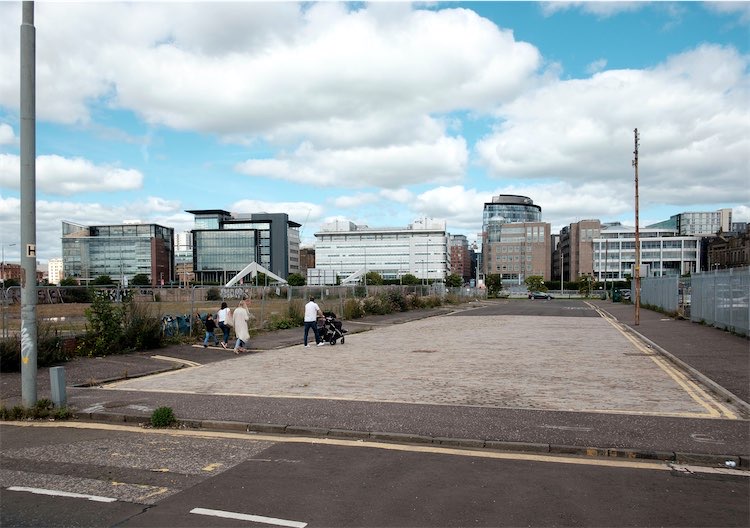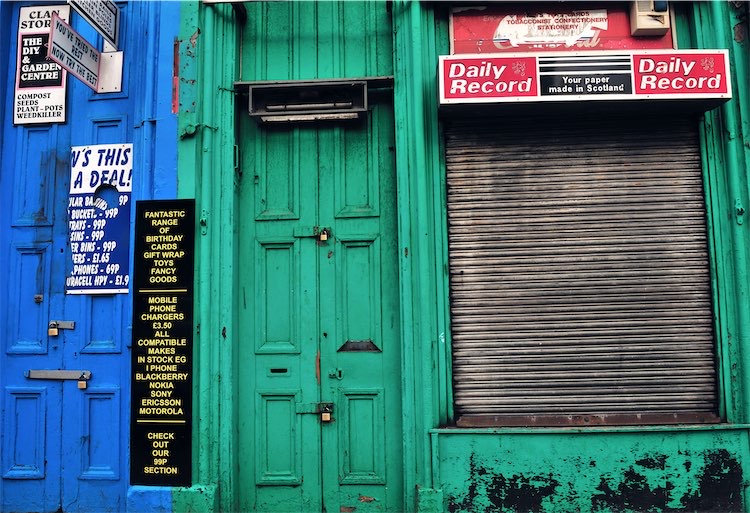Fighting to hold back the cost of living crisis in Scotland
8 min read
Last October the Scottish government passed its Cost of Living Act, which implemented a rent freeze and ban on most evictions to support tenants through the winter. The measures went well beyond anything brought in by the Westminster government. But both campaigners and the data itself suggest the Act has only had limited effect.
Figures seen under the Freedom of Information Act from 26 of Scotland’s 32 councils shows there were 6,995 applications for homelessness support in the final three months of 2022, during most of which the Cost of Living Act was in place.
This is higher than during the final three months of 2021 (6,399 applications), 2020 (6,061 applications) and 2019 (6,633 applications). The figures for the first nine months of 2022 were also higher than for the same periods in the three preceding years.
In Glasgow, the number of homelessness applications was virtually unchanged between the final quarters of 2021 and 2022, both of which were higher than the previous two years. A spokesperson for Glasgow City Council indicated that while there wasn’t a consistent pattern in the city’s recent homelessness data, the evictions ban had had a limited impact because the main driver of homelessness tends to be relationship breakdown.
“The cost of living crisis is coming on the back of two-plus years of the pandemic,” says Alison Watson, Director of homelessness charity Shelter Scotland. “And I think the pandemic has worn household resilience paper-thin, both financially but also in terms of relationships. “So people who might otherwise have been able to have a temporary solution to their problem - sofa surfing, camping out with friends and family etc – household budgets are struggling to accommodate another person in their household, and also relationships have been stretched paper thin. So there's a sense of those informal arrangements that people would have been able to make pre-pandemic, are just not enabling people to have a temporary place to stay without presenting [as homeless] to their local authority.”
“So people who might otherwise have been able to have a temporary solution to their problem - sofa surfing, camping out with friends and family etc – household budgets are struggling to accommodate another person in their household, and also relationships have been stretched paper thin. So there's a sense of those informal arrangements that people would have been able to make pre-pandemic, are just not enabling people to have a temporary place to stay without presenting [as homeless] to their local authority.”
Another potential issue is landlords selling up. The eviction ban is not a pandemic-style full ban – it contains exemptions allowing landlords to evict tenants for specific reasons, including if they intend to sell the property “due to significant financial strain”.
“So far, the result of the Scottish Government eviction ban and rent freeze has been just as concerning as we predicted,” says John Blackwood, chief executive of the Scottish Association of Landlords (SAL), which is one of three groups seeking a judicial review of the measures. “Landlords selling up loss-making property is further reducing housing supply, despite ever increasing demand. The result is the cost of finding a new home is actually increasing for renters.”
The extent to which landlords are being forced to evict and sell up by rising interest rates and other costs is unclear. Living Rent, a tenants’ union in Scotland, has not encountered a spike in evictions since September, legal or otherwise.
“It is a threat that landlords make often. But it's not something that we've seen happening in huge amounts with the rent freeze at the moment,” says the union’s national secretary Aditi Jehangir.
Living Rent’s membership is primarily among tenants in the private rental sector, but the terms of the Cost of Living Act have left some social housing tenants particularly exposed – “thrown under the bus,” in Jehangir’s view.
For a start, the rent freeze barely helped them at all – their rents are set every April, meaning they rose months before the rent freeze kicked in, and will rise again once the freeze runs its course at the end of March. Scottish councils have committed to limiting rent rises this April to an average of no more than £5 a week – around £250 a year – while housing associations have reported planned rent rises averaging 6.1%, with some social landlords potentially increasing rents up to the level of inflation.
Moreover, the Cost of Living Act states that eviction proceedings can go ahead if private tenants are at least six months behind on rent, or if social housing tenants have rent arrears above £2,250 – calculated as the average of six months’ social rent. But some social housing tenants were already underwater by more than that.
“We're dealing with a group of people in the social rented sector, over half of whom already were financially vulnerable before the pandemic. The pandemic's made them more vulnerable, the cost of living crisis has come along,” says Watson. During the first ten months of 2022, Shelter Scotland dealt with 84 social housing evictions cases with average arrears of £5,701 – more than twice the eviction threshold in the Cost of Living Act.
Shelter Scotland’s law service “haven't observed the new legislation having any impact on court proceedings throughout Scotland,” Watson adds. Private landlords will also be allowed to raise rents from April, but generally only by up to 3%, and only if they haven’t raised their rent in the prior 12 months – prompting anger from landlords.
Private landlords will also be allowed to raise rents from April, but generally only by up to 3%, and only if they haven’t raised their rent in the prior 12 months – prompting anger from landlords.
“While the Scottish Government sees fit to raise council and housing association tenants’ rents, so social landlords can do repairs and improvements, they fail to realise that private landlords are faced with similar financial pressures,” says SAL’s Blackwood.
“The cost of living crisis affects everyone. The extension of this emergency legislation is disproportionate and fails to take into account the individual financial circumstances of tenants and landlords. In no other sector do we see government imposing restrictive practices on individuals beings able to recoup their costs by raising their prices to consumers.”
But the prospect of further rent rises also provokes concern from tenants’ groups. While a 3% rise – which can be flexed to 6% by landlords who can show they face rising costs – is well below inflation, it comes on top of what went before.
The period prior to the Cost of Living Act saw private rents shooting up by 30-40% for some tenants, with other properties repurposed as expensive short-term lets. Official data shows that private rents in Scotland increased by 4.2% overall in the 12 months to October 2022 – the highest annual percentage rise since these records began in 2012. Private rents have grown faster in Scotland than England and Wales in every period since the year to July 2021.
“We've seen over a number of years that rent has really risen at an alarming rate,” says Living Rent’s Jehangir. “It seems like we've gone from one crisis to another in terms of costs. I would definitely say the rent freeze has had some impact in terms of providing a bit of comfort to tenants, but we're still facing all of those problems.”
Nor have Scotland’s rent controls protected people who had to start new tenancies, as is common in the private rented sector. “Especially when students were going back to university in September, October time, that was really difficult for a lot of them to find anywhere,” says Jehangir. “And at the moment, landlords are free to put up the prices whenever someone moves out. So we've been hearing lots of stories of really bad competition for things – people are being asked to bid for properties or asked to pay six months’ rent upfront.”
We've seen over a number of years that rent has really risen at an alarming rate
A Scottish government spokesperson said: “Our emergency legislation has provided immediate protection to many tenants who would otherwise have faced in-tenancy rent increases during the cost of living crisis.
While the primary purpose of the legislation is to support tenants, we recognise that costs have been rising for landlords too. By allowing increases in rent – capped well below inflation and limited to once per 12 months – we can continue protecting tenants from the minority of landlords who would impose unaffordable rent hikes.
“We reached an agreement with social landlords to limit rent rises to give tenants greater confidence about their housing costs and the security of a stable home. The voluntary agreements we have reached with social landlords will limit rises next year to levels well below inflation.”
Scotland’s rent controls and eviction protections will have made a difference for some tenants, but primarily through staving off something worse – they temporarily set in aspic a status quo that was already failing renters.
The Scottish Housing Regulator recently warned that councils are finding it increasingly hard to meet their legal obligations to homeless people. Shelter Scotland is particularly alarmed by planned cuts to Scotland’s social housebuilding budget – an extraordinary move given the dire need for more social housing. Living Rent fears a wave of evictions when the ban, recently extended to September, inevitably ends.
“I think people initially felt that sense of relief if they were staying in somewhere that was a decent rent,” says Jehangir. “But it's that sense of, 'this is very temporary and we're not sure what's going to happen next'.”
